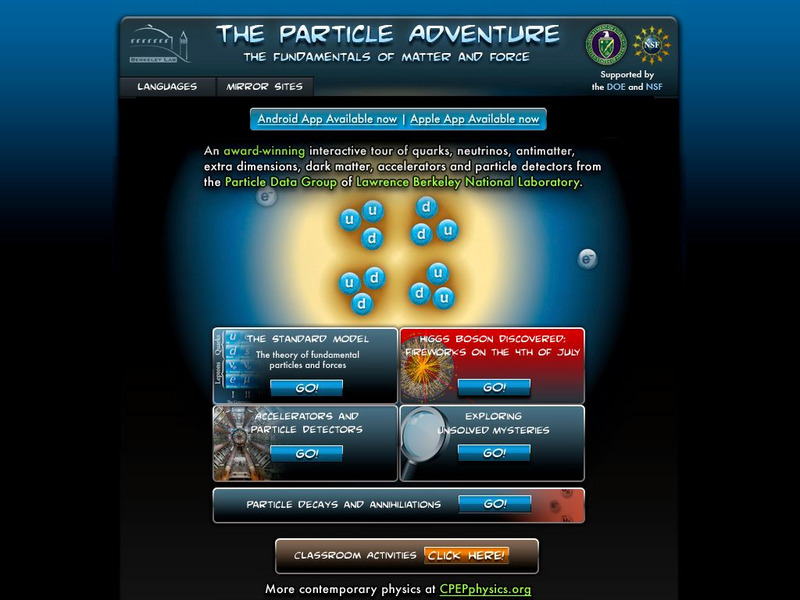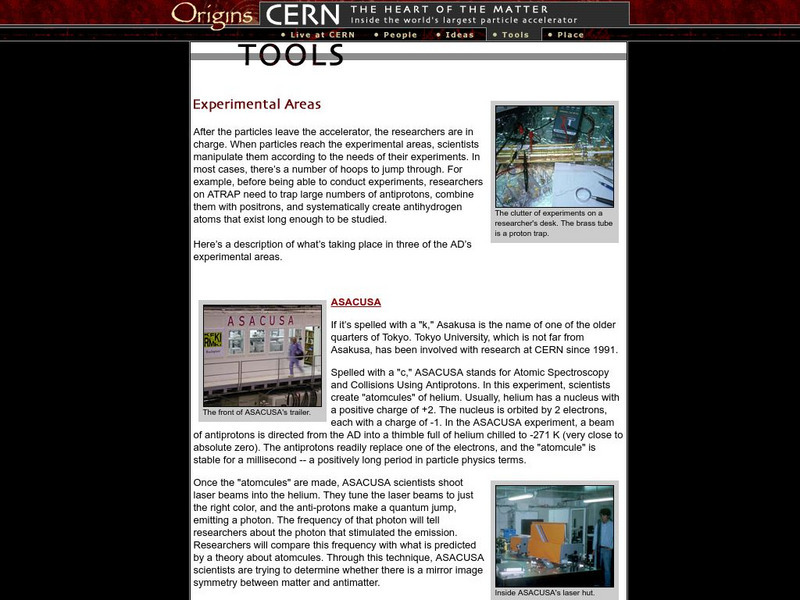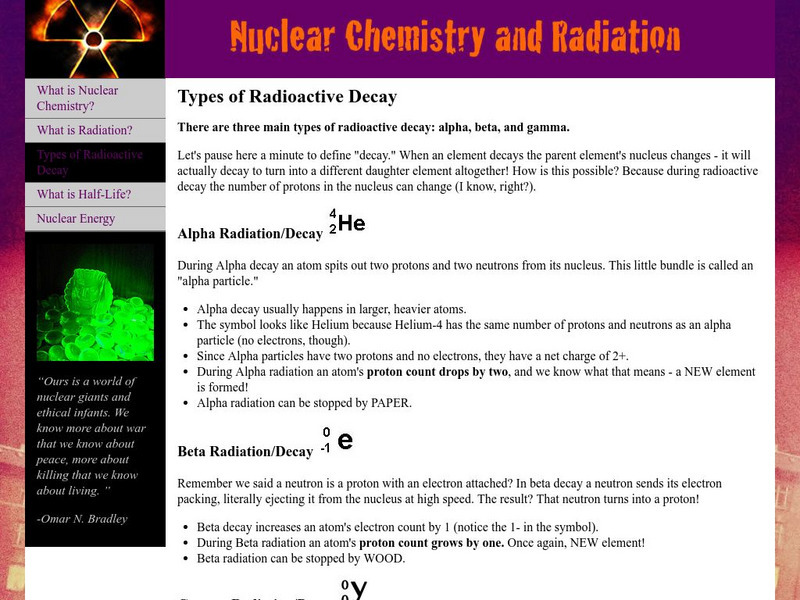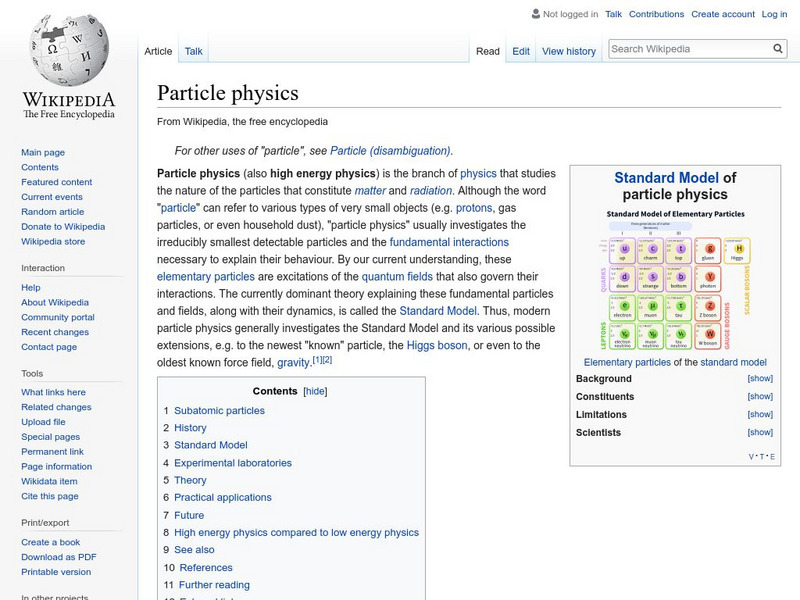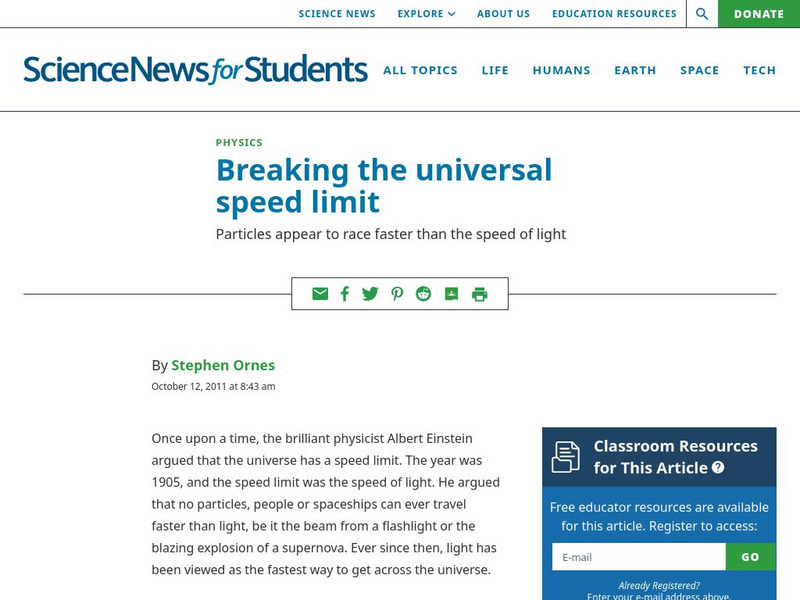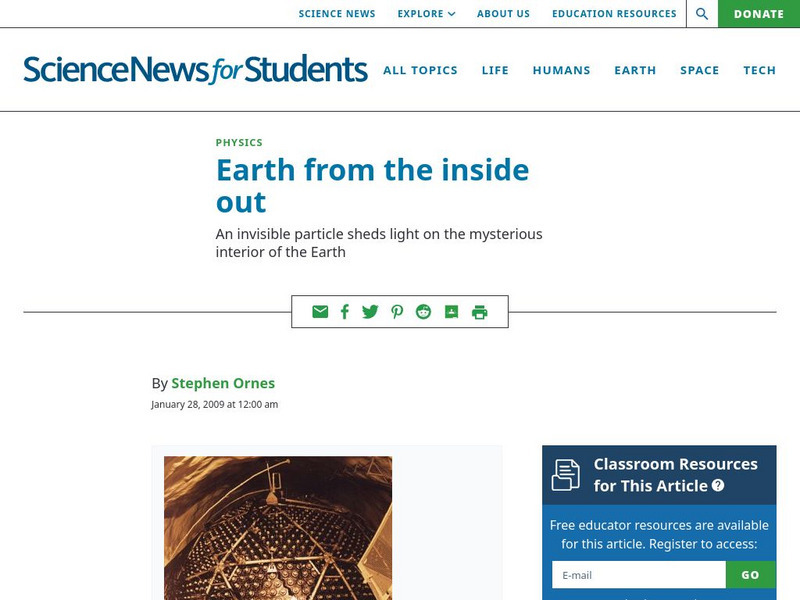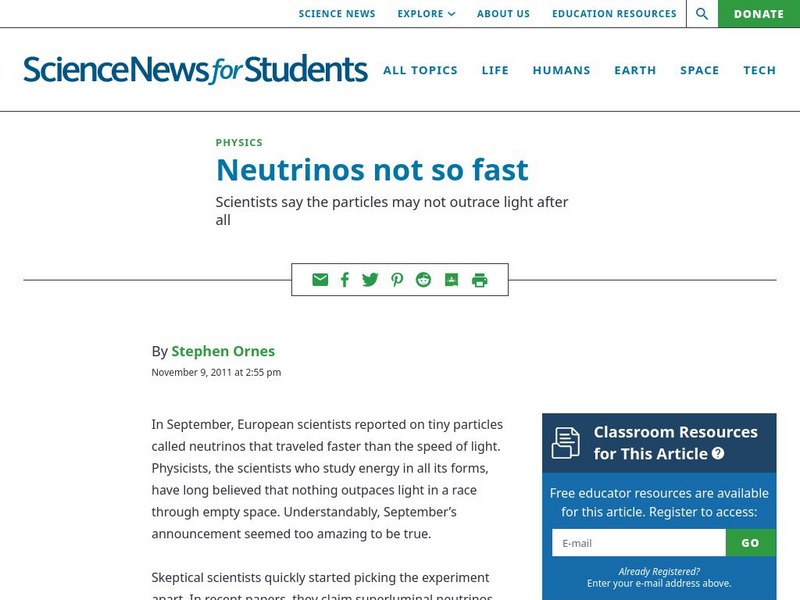Lawrence Berkeley National Laboratory
Berkeley Lab: Charge, Parity, and Time Reversal (Cpt) Symmetry
A simple explanation of the development of three principles of symmetry: parity, time reversal invariance, and charge conjugation.
Chiral Publishing
Chiral Publishing: An Introduction to Chemistry: Nuclear Chemistry: Audio Book
Learn about nuclear energy as you listen to the audio book describing nuclear chemistry. View maps, examples, graphs, and pictures describing everything from electrons to beta emissions and more.
Other
Santa Fe Institute: In Memoriam: Murray Gell Mann
A tribute to the life of Murray Gell-Mann, who passed away on May 24, 2019 at the age of 89. At the end of the article, there are numerous links to other tributes.
Lawrence Berkeley National Laboratory
Berkeley Lab: The Particle Adventure
Visit this site for an interactive tour of the atom and all aspects of particle physics. View the animations available with almost every description on this site. A great place for the fundamentals of particles and forces including a...
CK-12 Foundation
Ck 12: Elastic Collisions
[Free Registration/Login may be required to access all resource tools.] In this online tutorial students are asked to demonstrate and apply the law of conservation of momentum.
Exploratorium
Exploratorium: Cern: The Antiproton Decelerator
Explains the function of the Antiproton Decelerator, a device at the European Center for Nuclear Research used to "slow down" bunches of antiprotons for use in experiments.
Exploratorium
Exploratorium: Cern: Experiments With Antimatter
A description of the two primary experiments conducted at CERN on antimatter: ASACUSA, an attempt to form "Atomcules," using antiprotons; and ATHENA, an experiment to compare the properties of hydrogen and antihydrogen.
Boise State University
Boise State: Nuclear Chemistry and Radiation: Types of Radioactive Decay
This article with embedded videos provides information about three main types of radioactive decay: alpha, beta, and gamma.
TED Talks
Ted: Ted Ed: Patricia Burchat Sheds Light on Dark Matter
Watch as physicist, Patricia Burchat, discusses two basic ingredients of our universe, dark matter and dark energy, and the effects they have in the expanding universe. [17:09]
Wikimedia
Wikipedia: Particle Physics
An in-depth encyclopedia article on particle physics. Discusses what encompasses the study of particle physics, gives a history of particle physics, briefly describes the Standard Model of particle physics, discusses the dispute that...
Wikimedia
Wikipedia: Democritus
This encyclopedia entry surveys the life and thought of the 5th century BCE Greek philosopher Democritus, who proposed the existence of the atom.
Society for Science and the Public
Science News for Students: Breaking the Universal Speed Limit
Describes research into whether neutrinos travel faster than the speed of light.
Society for Science and the Public
Science News for Students: Earth From the Inside Out
Describes scientists attempts to use geoneutrinos to see 'inside' the Earth.
Society for Science and the Public
Science News for Students: Neutrinos Not So Fast
Discusses the validity of research showing that neutrinos travel faster than the speed of light.
TED Talks
Ted: Ted Ed: Why Neutrinos Matter
Elementary particles are the smallest known building blocks in the universe- and the neutrino is one of the smallest of the small. These tiny neutrinos can tell us about the furthest reaches and most extreme environments of the universe...
TED Talks
Ted: Ted Ed: The 2400 Year Search for the Atom
How do we know what matter is made of? The quest for the atom has been a long one, beginning 2,400 years ago with the work of a Greek philosopher and later continued by a Quaker and a few Nobel Prize-winning scientists. Theresa Doud...
TED Talks
Ted: Ted Ed: If Matter Falls Down, Does Antimatter Fall Up?
Chloe Malbrunot investigates matter and anti-matter by placing two atoms- one made of matter, and the other antimatter- in the cockpit of a plane, ready to jump. What do you think will happen? [2:54]
TED Talks
Ted: Ted Ed: The Basics of the Higgs Boson
Using the Socratic method, CERN scientists Dave Barney and Steve Goldfarb explain the exciting implications of the Higgs boson. [6:30]
TED Talks
Ted: Ted Ed: What Happened to Antimatter?
CERN scientist Rolf Landua returns to the seconds after the Big Bang to explain the disparity that allows humans to exist today. [5:16]
American Association of Physics Teachers
Com Padre Digital Library: Physics to Go: Explore Physics on Your Own
Contains a full physics curriculum with links to games, webcasts, and activities. By creating a free account, students and teachers can create their own personal collection of resources.
Symmetry Magazine
Symmetry Magazine: Explain It in 60 Seconds: Neutralinos
Neutralinos, described here, are hypothesized particles of dark matter. Scientists hope to confirm their existence through their research with the Large Hadron Collider. "Explain It In 60 Seconds" is an article series that aims to...
Symmetry Magazine
Symmetry Magazine: Explain It in 60 Seconds: The International Linear Collider
The International Linear Collider, when built, will be larger than the Large Hadron Collider near Geneva. A short description is given here. "Explain It In 60 Seconds" is an article series that aims to summarize in a few paragraphs the...
Symmetry Magazine
Symmetry Magazine: Explain It in 60 Seconds: Luminosity
Luminosity, described here, is a scale for measuring how efficiently a collider works. "Explain It In 60 Seconds" is an article series that aims to summarize in a few paragraphs the meaning of different concepts in particle physics.
Symmetry Magazine
Symmetry Magazine: Explain It in 60 Seconds: Quarks
Quarks, described here, are particles of matter that cannot be further broken down. Thus they are called fundamental particles. "Explain It In 60 Seconds" is an article series that aims to summarize in a few paragraphs the meaning of...





